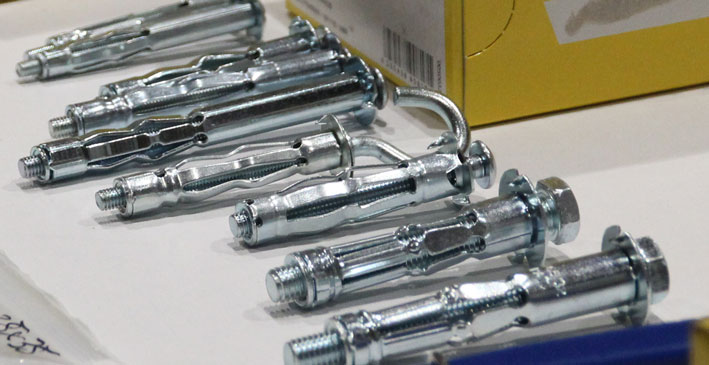Overall, there are many different drywall fixings that exist. Some that need to be combined with a screw, so they can provide a firm grip and create a strong hold anywhere in a drywall panel, often they will have wide threads that carve out grooves in the wall for traction. Others have toggle arms, which need to be dropped into place behind the wall or expand within the cavity.
When to use drywall anchors or plugs?
Drywall fixings are not necessary for all types of wall applications. However, they are especially handy when there is no wall stud to directly fasten your items too. But knowing which fixing to use can be challenging. The type of fixing you need will depend on the wall material, weight of the load being hung and how you will install it.
Different types of drywall anchors and plugs
Most fixings belong to one of several categories, below we go through some of the most popular types of anchors and plugs, and when they should be used.
Hollow wall anchors
Hollow wall anchors, such as the cavity fixing HRM, are suitable for fastening on walls like gypsum plasterboard, fibreboard and chipboards, and can also be used on the ceilings. They are used for medium-duty applications such as lamps, towel rails and decorative shelves. When the screw is tightened into the cavity the anchor will expand over a large area which results in high load values.
Threaded dry wall plugs
These plugs are quick and easy to install and can be used with a simple screw. They are sometimes called threaded wall anchors or self-drilling anchors because you do not need to pre-drill any holes. The plasterboard plug GKDZ, for example, comes with a sharp-edged tip especially designed to drill through plasterboard. This type of fixing is recommended for medium duty application such as labels, light switches and cable channels.
Toggle bolts
Toggle bolts are often used for more heavy-duty applications such as anchoring furniture, shelves, and sliding door profiles, where you do not have an available stud to drill into. They consist of 2 parts, the toggle and the bolt. The spring toggle FK-S is a toggle bolt that also comes with a long-threaded rod so that the fixing can be used in many different board thicknesses.
Plastic hollow wall plugs
These are often a low-cost fixing, used for light-duty applications including lamps and light switches. To install using a winged plastic plug you will need to pre-drill the hole and then push the fixing through. Once the fixing is in you can then use a simple wood or chipboard screw and as you tighten the screw, the plug will expand into place. The cavity fixing HR is also manufactured from high-quality, ageing- weather- and UV-resistant nylon.
Strap toggle bolts
Also known as snap toggles, these fixings are a good choice for installing heavy duty items to the wall or ceiling. They can be used in a range of board thicknesses and are fast and easy to install as they do not require any additional setting tools. To install strap toggle bolts, such as the Toggle BT plus, just insert the metal part through the hole into the free space behind the board, pull back on the plug through its strap wings and then slide the plastic washer into the drill hole. Then just snap off the remaining strap with your hands!
There are many different types of drywall fixings that exist and the one that is best for you will depend on the project you are completing. But some things that you will need to consider before choosing the fixing are the thickness of the board you will install on to and the weight of the application you are fixing.


